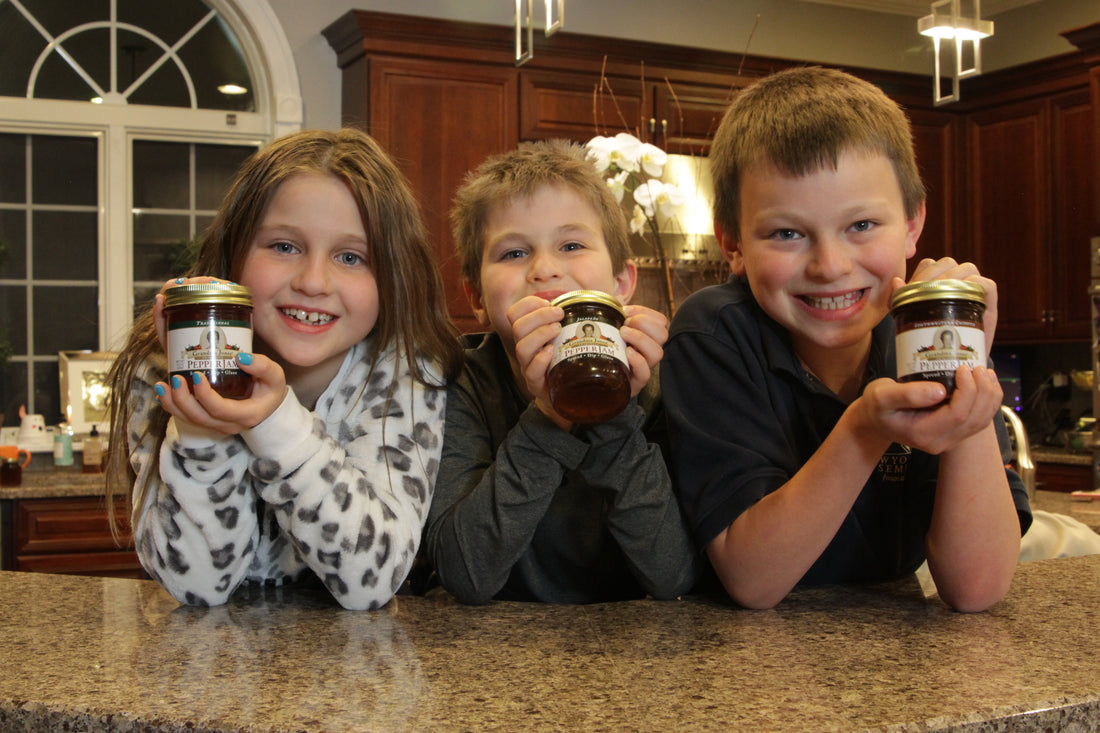
The Art of Making Homemade Pepper Jelly: Step-by-Step Guide
Share
Introduction
Pepper jelly is a delightful and versatile condiment that combines the sweetness of sugar with the spicy kick of peppers, resulting in a unique flavor experience. Making your own homemade pepper jelly allows you to customize the flavors, heat levels, and ingredients to suit your preferences. In this comprehensive guide, we'll take you through the step-by-step process of creating your very own pepper jelly, along with tips and suggestions for incorporating it into your favorite dishes.
I. Gathering Your Ingredients and Equipment
A. Ingredients
To make a basic pepper jelly, you'll need the following ingredients:
- Fresh peppers (such as jalapeños, bell peppers, or other varieties depending on your desired heat level)
- Sugar
- Apple cider vinegar (or white vinegar)
- Pectin (such as fruit pectin or liquid pectin)
- Optional: Additional fruits or herbs for flavor (such as mango, cranberry, or cilantro)
B. Equipment
In addition to the ingredients, you'll need the following equipment:
- Cutting board and knife
- Food processor or blender (optional)
- Large saucepan or pot
- Candy or digital thermometer
- Sterilized jars with lids for canning
- Canning funnel, jar lifter, and other canning tools (optional)

II. Preparing Your Peppers
A. Cleaning and chopping
Begin by washing your peppers thoroughly under cold water. Remove the stems and seeds, and then chop the peppers into small pieces. If you prefer a smoother jelly, you can use a food processor or blender to finely chop or puree the peppers.
B. Measuring the heat
To control the heat level of your pepper jelly, you can adjust the ratio of spicy peppers to mild peppers or bell peppers. For a milder jelly, use a higher proportion of bell peppers; for a spicier jelly, use more hot peppers like jalapeños or habaneros.

III. Making the Pepper Jelly
A. Cooking the pepper mixture
In a large saucepan, combine your chopped peppers, sugar, and vinegar. Bring the mixture to a boil over medium heat, stirring frequently. Once the mixture reaches a rolling boil, cook for an additional 10 minutes, continuing to stir.
B. Adding pectin
After the 10-minute boil, add pectin to the mixture according to the package directions. Cook for an additional 1-2 minutes or until the mixture reaches the desired thickness. Test the consistency by dipping a cold spoon into the mixture; it should coat the spoon and slowly drip off.

IV. Canning and Preserving Your Pepper Jelly
A. Filling jars
Carefully ladle the hot pepper jelly mixture into sterilized jars using a canning funnel, leaving 1/4 inch of headspace at the top of each jar. Wipe the rims of the jars clean with a damp cloth to ensure a proper seal.
B. Sealing and processing
Place the lids on the jars and tighten the bands until they are fingertip-tight. Process the jars in a boiling water bath for 10 minutes, or according to your local altitude guidelines. Remove the jars from the water bath using a jar lifter and let them cool on a towel or cooling rack.
C. Storing your pepper jelly
Once the jars have cooled and the seals have set, store your pepper jelly in a cool, dark place for up to one year. Refrigerate after opening and enjoy within a few weeks.

V. Enjoying Your Homemade Pepper Jelly
A. Serving suggestions
Now that you've made your own delicious homemade pepper jelly, it's time to enjoy it! Here are some popular ways to incorporate pepper jelly into your meals:
- Serve it as a topping for cream cheese or goat cheese on crackers or toasted bread.
- Use it as a glaze for grilled meats, such as pork, chicken, or even salmon.
- Add it to a sandwich or burger for a sweet and spicy kick.
- Drizzle it over roasted vegetables or mix it into a salad dressing.
- Incorporate it into a dessert, such as a cheesecake or a chocolate tart.



B. Experimenting with flavors
Don't be afraid to get creative with your pepper jelly! Try experimenting with different types of peppers, fruits, and herbs to create unique flavor combinations. Some ideas to get you started include:
- Pineapple-habanero pepper jelly
- Raspberry-jalapeño pepper jelly
- Mango-serrano pepper jelly
- Roasted red pepper and garlic jelly
- Chipotle-lime pepper jelly

Conclusion
Making homemade pepper jelly is a fun and rewarding process that allows you to explore new flavor combinations and add a personal touch to your meals. By following this step-by-step guide, you'll be well on your way to creating a delicious, sweet, and spicy condiment that you can enjoy in a variety of dishes. So grab your ingredients and equipment, and start making your very own pepper jelly today!

